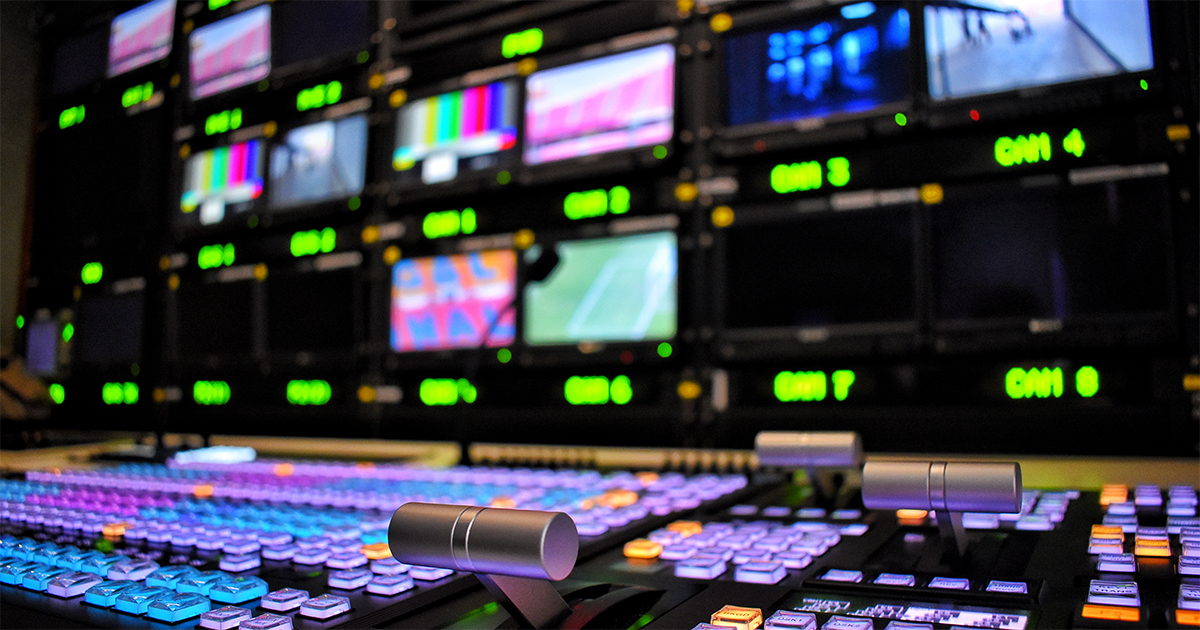As the tsunami of the COVID-19 coronavirus pandemic swept across the globe in early 2020, one of the earliest casualties in its wake within the media and entertainment ecosystem was live TV and video production.
Live entertainment everywhere was postponed or cancelled, with subsequent job losses among staffers and freelancers—something that, sadly, continues to this day as renewed restrictions and lockdowns take hold in most countries.
With the first lockdown in March, across all facets of live production, teams began grappling with the new concepts of social distancing, rigid sanitary discipline and bio-secure bubbles mandated by governments and local authorities.
As entertainment shows and sporting events were postponed and cancelled, travel restrictions were implemented. Stadiums were shuttered. No crowds were allowed to congregate anywhere.
Production operations staff could no longer travel to work, whether in a studio center or on-site at a venue. Don’t leave your home: or if you do, you must be socially distanced by two meters from your colleagues. The over-riding brief for most live producers was this: remove as many crew as you possibly can off-site.
“Things will be different, when we finally emerge back into the light with the Covid-19 virus hopefully removed from our lives by a working vaccine.”
One of the unique and compelling things about live production has been the close physical proximity of the crews involved: whether in a truck, cabin or the production gallery in a studio center, live teams are used to working in very close proximity with directors, PAs, replays, audio, graphics and producers huddled side-by-side as shots are called on the show.
In 2020, the coronavirus pandemic exploded that tradition and those workflows. We were now living and working in unprecedented times, thanks to social distancing. Video production had to really become remote, distributed and decentralized thanks to the enforced new working from home (WFH) culture.
Remote production or remote integration (REMI) has of course been utilized across the world on many levels of production over recent years, where the backend is centralized away from the venue to another place. But now that you could not have your producer, PA, director and vision mixer sitting in the front row of the gallery any more, a virtual gallery was required.
Distributed Workflows
It became necessary to start moving people to a distributed workflow, with a skeleton crew on-site but almost all operators and, very often, on-air talent moved away to a cloud-based production.
Various operators needed access to rundown, multiviewers, control surfaces and VPNs from home. On-air talent required a camera, lighting, IFB return path, comms—all at their fingertips and as close to real-time as possible. Video production teams had to get creative and adopt new approaches to overcome all of these emerging obstacles.
Latency is critical, when looking at a scenario where you are perhaps trying to backhaul a number of presenters to a hub, create a multiviewer and send them a return feed. Different timing plans need to be adopted, with a blend of cloud mixing and video conferencing tools.
On top of that are discrete feeds from individual cameras and microphones, contributed sources and VTs, plus contribution of multiviewers and program feeds from the venue or truck to different locations for different shows—all putting pressure on connectivity and communication.
If dedicated fiber or managed connectivity from the venue is unavailable, you’re probably looking at a mixture of bonded cellular technology and public internet.
But how do you do remote production over public internet? The engineering complexity of live cameras, switchers, comms, real time graphics, replays and VT and MAM needs to be ‘remoted’ to the cloud or a remote operations center (ROC).
Remote Production, Meet Remote Collaboration
On top of remote production you now have remote collaboration, with production and presentation teams and guests relying on collaborative tools like Zoom, Teams and Slack.
This has created a new set of challenges around avoiding disaster in live production: losing talent or guests last-second; losing communications and comms; losing power; or unforeseen weather-related issues. Oh, and if you are a presenter or guest on a live show, make sure to tell your family so that the kids don’t run into the room while you are on-air! These new realities are unique to producing and directing virtually.
Live teams have also had to quickly learn the language of SRT (Secure Reliable Transport), RIST (Reliable Internet Stream Transport) and other protocols designed for delivering premium broadcast-grade content over the public internet, without losing quality—ensuring reliable video content regardless of bandwidth limitations.
This has muddied the waters between “broadcast” and “webcast.” However, that distinction is hardly relevant where unmanaged internet connectivity is deployed to produce live events which would not otherwise be available to fans at all during this Covid-19 period.
In practical terms, where skilled facilities providers or system integrators are involved to ensure acceptable levels of security and redundancy, a “new normal” really has emerged where the show, no matter how big, does go on.
And perhaps you still bring in the OB truck (your “mobile data center”) for the final show day, but this new decentralized production model opens up possibilities for warm-up days with smaller teams producing content for different shows and platforms.
“With crews safe and production workflows established, new possibilities also emerge for on-screen enhancements like sound atmos, fan engagement tools, virtual fans and AR enhancements.”
With crews safe and production workflows established, new possibilities also emerge for on-screen enhancements like sound atmos, fan engagement tools, virtual fans and AR enhancements.
Of course, WFH comes with the attendant benefit of sustainability, as the necessity for crew to travel back and forth to productions is dramatically reduced. It also offers the potential for a recalibrated work-life balance: working from anywhere is certainly an opportunity for those able and willing to embrace change.
The global pandemic has changed the world, and with it the world of live TV and video production.
Many major events that were postponed or cancelled in 2020 will return in 2021, most likely making it a bumper year for live production around the globe. New technologies, workflows and working methods that have gained traction due to the enforced coronavirus restrictions will be fully available alongside traditional practices.
And maybe the “traditional” live production model is gone forever? We do not have the answer yet, but we will start to find out as we gratefully say goodbye to 2020 and salute the prospect of a new dawn in 2021.


